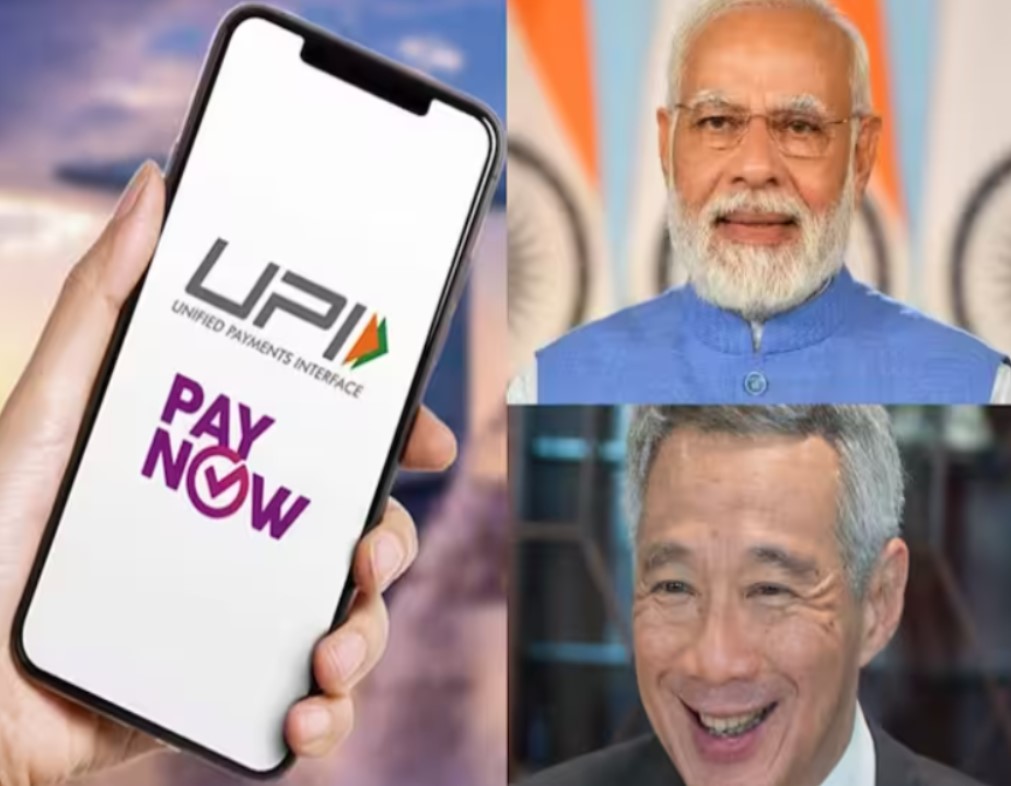The recent integration of the Unified Payments Interface (UPI) and Singapore’s PayNow is a small but significant step to achieving India’s goal to be a developed nation and a superpower in 2047. Both UPI and PayNow are mobile-based instant real-time payment systems.
According to the Reserve Bank of India (RBI), the integration will allow person-to-person (P2P) remittances for “maintenance of relatives abroad” & “gifts” by residents of either country. The daily transaction limit is capped at ₹60,000, equivalent to approximately SGD 1,000.
To start with, RBI[i] listed six Indian banks for receiving payments. Four are enabled for sending remittances. DBS Bank and Liquid Group will handle similar responsibilities in Singapore. RBI said that the network will expand with time.
Disruptive technology
The integration will disrupt the existing system of bank transfers using the Western Block-controlled cross-border payment system SWIFT (Society for Worldwide Interbank Financial Telecommunications) which costs roughly USD13 for sending USD200.
UPI does not charge any user fee. Also, SWIFT transactions take a longer time to settle when compared to phone-based payment systems. UPI which is developed on the back of Immediate Payment Service (IMPS) infrastructure, is particularly fast.
The UPI-PayNow marriage will bring down the transaction cost for India-Singapore fund transfers drastically and will increase the speed of transactions dramatically. The higher the speed, the greater the access to finance and the lesser the opportunity cost of money.
The biggest gain will come through the ease of fund transfer. The traditional bank transfer demands details like the receiver’s bank account, SWIFT and/or IFSC codes. On the contrary, merely a phone number – which is seeded with the national identity and linked to the bank account – is enough in a UPI transfer.
The expatriate population are an immediate beneficiary of this development. India is the largest recipient of remittances worldwide, mostly due to its thriving IT industry and other high-tech services that send out people on off-shore projects.
As of 2022, India is estimated to have received USD 100 billion in remittances. Singapore (5.7%) is the fourth largest source of inflow after the US (23.4%), United Arab Emirates (18%) and United Kingdom (6.8%).
There is no data on inward remittance to Singapore. Pew Research pointed out that India is the third largest recipient of the remittance outgo from Singapore, after China and Malaysia.
The bottom line is: the ex-pat Indians in Singapore can now send remittances home far more easily and at a lesser cost than ever. Net net, it improves the ease of doing business between India and Singapore. It is now time to expand these facilities to more countries.
“The connectivity between PayNow and UPI is a major milestone in the development of next-generation infrastructure for cross-border payments between Singapore and India, and is closely aligned with the G20’s financial inclusion priorities of driving faster, cheaper and more transparent cross-border payments,” Monetary Authority of Singapore[ii] (MAS) said in a media statement.
Incidentally, the Chief Fintech officer of MAS is Indian-origin Sopnendu Mohanty.
‘Atmanirbhar’ transaction
Access to finance is crucial for individual liberty. For a nation that aspires to be prosperous and powerful; access to a cheaper, and more efficient cross-border transaction mechanism has serious geopolitical and economic significance.
US dollar and SWIFT have been pivotal to trade and investment in the unipolar world after the fall of the Berlin Wall. The sequence of events over the last three years, the Ukraine crisis and the rise of the China-Russia axis in 2022 are proof enough that the world is moving to multi-polarity.
It is in everyone’s interest that India with its large, fast-growing economy and military power, emerges as a balancing power. The Narendra Modi government is steering India to acquire this slot.
This has many ramifications, particularly for Asia, where China once assumed nearly a super-power status taking advantage of Indian slumber, particularly during the UPA rule between 2004 and 2014.
Building infrastructure is a crucial part of this game. Though less discussed the digital-financial infrastructure is a crucial part of this game. Till the advent of UPI, in 2016, India was wholesomely dependent on the costly western gateways even for the domestic paperless transaction.
Now that India tops[iii] the world in digital transactions riding on UPI, the domestic part is settled. The next challenge is to reduce dependence on SWIFT and USD for cross-border transactions and improve the acceptability of the Indian Rupee.
Unlike China or even Thailand – which conducts land-border trade in local currencies – until recently, Indian trade was almost fully dependent on USD and SWIFT due to the lack of convertibility of the Rupee.
The opening of the Rupee trade window[iv] in 2022, was a major departure from that. The window is an extension of the Rupee-Ruble (Russian currency) trade mechanism that was revived in the days after the Ukraine crisis to source petroleum crude from Russia bypassing the US sanction.
SWIFT would not have allowed this crude oil trade with Russia. The benefits were visible to the world. India ended the year as the only bright spot in a recession and inflation-hit world economy.
The best part is even some European Union economies stepped up the purchase of refined petroleum products from India to access cheap energy by passing the sanction imposed by themselves.
Better leveraging power
A powerful nation is one that is capable of taking decisions on its own, for the benefit of the common people of the country, not at the behest of someone else. India exercised that power over the last power ignoring initial criticism from the Western Block.
The challenge for the future is not to replace SWIFT. India’s engagement with the West is ever-rising. The US replaced UAE as the topmost source of remittance in 2017.
However, it is imminent that India builds its own infrastructure to negotiate the push and pull in world politics. More importantly, reduced dependence on USD will safeguard India from foreign currency risks in a volatile global economy.
As an energy-importing nation, India’s trade balance runs in the negative. While correcting the trade imbalance is a long-term agenda; the country’s dependence on other sources – like foreign direct investment, remittance, and foreign portfolio investment – for USD is undeniable.
Sustained rate hikes by the US Federal Reserve and the return flight of foreign investment from the global capital market in 2022 were perfect examples of the associated risks. It is a different matter that the Indian market survived the onslaught riding on a large base of domestic investors.
India is handling the dual- presidency of G20 and Shanghai Cooperation Organisation (SCO) in 2023.
Russia is currently trading with China, using Beijing’s Cross-Border Interbank Payment System[v] (CIPS). Both Moscow and Beijing are keen that Delhi joins them in developing an alternative to SWIFT.
While India may participate in such ventures, it is unlikely that Delhi will bank on it. The solution lies in developing a Rupee-based cross-border transaction infrastructure.
The UPI-PayNow pact is a good move. A similar arrangement is already in place between India and UAE[vi] where tourists and migrants can pay using UPI linked to their Indian bank account. It is time to widen the scope of such transactions to trade.
All eyes are now on G20 nations and their acceptance of UPI.
[i] https://www.rbi.org.in/Scripts/FAQView.aspx?Id=156
[ii] https://www.mas.gov.sg/news/media-releases/2021/singapores-paynow-and-indias-upi-to-link-in-2022
[iii] https://www.indianarrative.com/economy-news/india-tops-world-ranking-in-digital-payments-62451.html
[iv] https://rbi.org.in/Scripts/NotificationUser.aspx?Id=12358&Mode=0
[v] https://www.businessinsider.in/politics/world/news/china-and-russia-are-working-on-homegrown-alternatives-to-the-swift-payment-system-heres-what-they-would-mean-for-the-us-dollar-/articleshow/91168432.cms
[vi] https://indianexpress.com/article/explained/explained-indians-payments-upi-uae-7881510/
(The views expressed are the author's own and do not necessarily reflect the position of the organisation)


